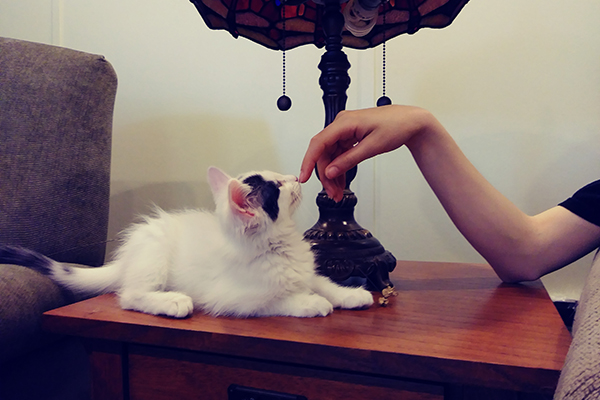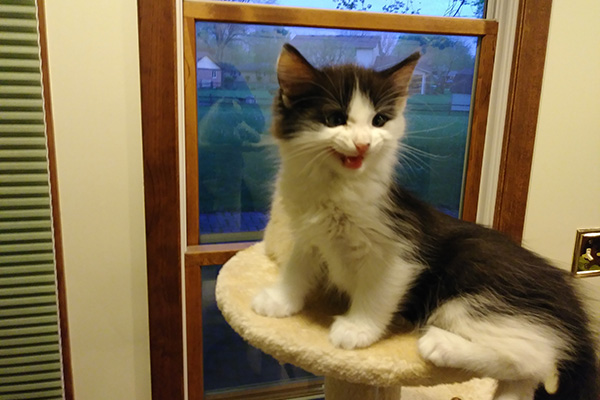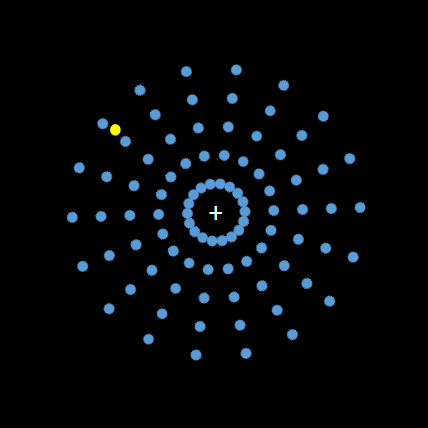Psychology
Greg Elvers
Anthrozoology and Human-Animal Interactions

Anthrozoology is the study of how humans and animals interact. My personal interests in anthrozoology center on human - cat interactions, but I am open to interesting projects involving humans and other species. If you are an animal lover and want to understand the relations you have with pets, this is a perfect lab for you.
Karina Palermo is investigating correlates of neotenous behaviors in cats (Felis catus). Neotenous behaviors are juvenile behaviors retained in adulthood, such as purring, kneading (biscuit making) and meowing. Karina’s basic hypothesis is that a positive correlation exists between neotenous behaviors in cats and nurturing behaviors in humans.
Nicole Beasley and Hannah Torok are working on a project that looks at how therapy dogs affect exam stress in students. Barker, Barker, McCain and Schubert (2016) found that students subjectively report less stress after interacting with therapy dogs, but the objective measures of stress did not show an effect of therapy dogs. Nicole and Hannah will be using other objective measures of stress to see if an effect is observed.
I am looking at how human and cat “personalities” interact with each other. In particular, I am looking at how the match / mismatch between the two influences the human’s satisfaction with the cat. I hypothesize that satisfaction with a cat will depend on how well the human and cat personalities complement each other on some personality dimensions and how well the personalities match each other on other dimensions.
Psychology of Felis catus

To understand an animal, you must understand how it perceives the world, the way it thinks and the way it behaves -- that is, you need to understand the psychology of the animal. This part of my lab grew out of a course I taught in the fall of 2017 on the Psychology of Felis catus.
Alexander Lawriw, Taylor Chambers and I are looking as the stability, both situational and temporal, of “personality” in cats. We hypothesize that the human’s perception of cat personality is not stable and changes in different situations and as the cat ages.
Perception
 My formal training is as a cognitive psychologist. My dissertation and contract work has looked at extensions of the Theory of Signal Detection to multiple signals and multiple observers. My recent perceptual work has looked at a visual phenomenon known as motion induced blindness.
My formal training is as a cognitive psychologist. My dissertation and contract work has looked at extensions of the Theory of Signal Detection to multiple signals and multiple observers. My recent perceptual work has looked at a visual phenomenon known as motion induced blindness.
Motion induced blindness (MIB) is the failure to perceive an unchanging object that is in a field of other objects that are systematically changing. For example, stare at the plus sign in the center of the rotating dots. Notice, but do not look at, the yellow dot in the upper left. Does it perceptually disappear at times? A common explanation of MIB is that attentional processes drive it. Another explanation is that the visual system treats the unchanging object as a scotoma (damaged area of the retina) and perceptually fills in the scotoma with the surrounding visual field. Joe Pauszek, a former student, and I have looked at ways of partially disentangling these two explanations.
Contact Greg Elvers
Email: Greg Elvers
Phone: 937-229-2171
Office: Saint Joseph Hall, Room 329-D
